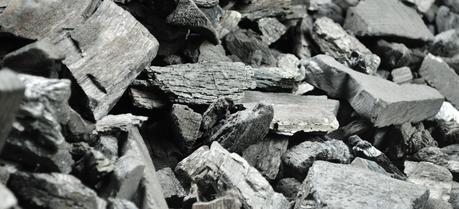 Powder from inexpensive, high-grade charcoal can be used to make hydrogen gas, a development that could help pave the way toward the touted “hydrogen economy.” (Credit: Flickr @ Gregory Moine http://www.flickr.com/photos/gregory-moine/)
Powder from inexpensive, high-grade charcoal can be used to make hydrogen gas, a development that could help pave the way toward the touted “hydrogen economy.” (Credit: Flickr @ Gregory Moine http://www.flickr.com/photos/gregory-moine/)In the latest advance in efforts to find an inexpensive way to make hydrogen from ordinary water—one of the keys to the much-discussed “hydrogen economy”—scientists are reporting that powder from high-grade charcoal and other forms of carbon can free hydrogen from water illuminated with laser pulses.
The hydrogen economy is a proposed system of delivering energy using hydrogen. Hydrogen is seen as a potential fuel for cars, the energy needs of buildings and portable electronics. Since free hydrogen does not occur naturally in sufficient quantities, it must be generated by steam reformation of hydrocarbons, water electrolysis or other methods. Hydrogen is thus an energy carrier, not a primary energy source (like oil). The feasibility of a hydrogen economy depends on issues of electrolysis, energy sourcing, including fossil fuel use, climate change, and sustainable energy generation.
Ikuko Akimoto and colleagues point out that traditional approaches to breaking down water, which consists of hydrogen and oxygen, involve use of expensive catalysts or electric current passed through water. Since economical production of hydrogen from water could foster a transition from coal, oil and other fossil fuels, scientists have been searching for less expensive catalysts. Those materials speed up chemical reactions that otherwise would not work effectively. Based on hints from research decades ago, the scientists decided to check out the ability of carbon powder and charcoal powder, which are inexpensive and readily available, to help split hydrogen gas from oxygen in water.
Akimoto’s team tested carbon and charcoal powders by adding them to water and beaming a laser in nanosecond pulses at the mixtures. The experiment generated hydrogen at room temperature without the need for costly catalysts or electrodes.
The gas was obtained by laser irradiation in the visible-near infrared range and depended nonlinearly on the laser power density. From a gas component analysis and a repeated irradiation experiment, it was found that the carbon powder was oxidized and acted as a sacrificial reagent in the photochemical hydrogen generation. In addition, a highly carbonized charcoal, known as Bincho-tan, was found to effectively work for the hydrogen generation.
The success of the experiment shows that there may be an alternative, inexpensive method for producing small amounts of hydrogen from water.
Ikuko Akimoto, Kousuke Maeda, Nobuhiko Ozaki (2013). Hydrogen Generation by Laser Irradiation of Carbon Powder in Water Journal of Physical Chemistry C DOI: 10.1021/jp4012558
